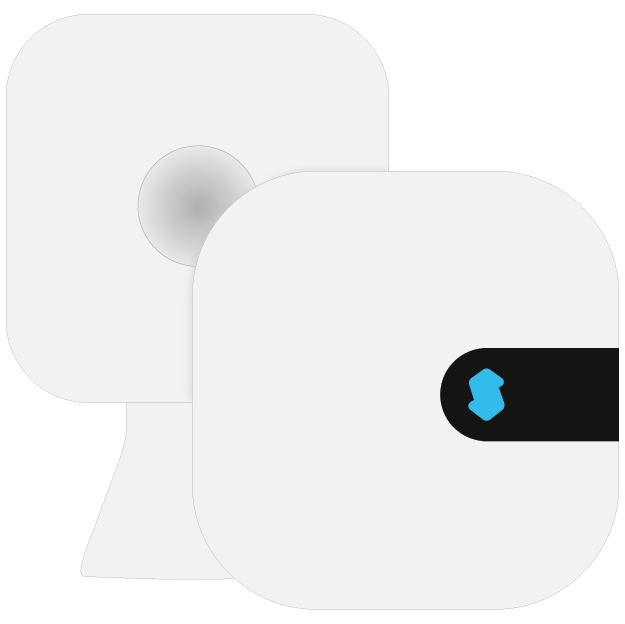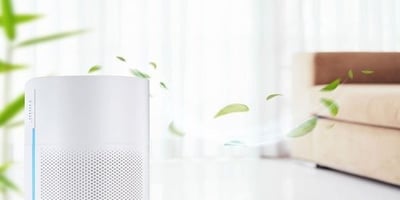Why Is My House So Dusty? Tips to Improve Indoor Air Quality
Three days. That's how long a clean surface typically stays dust-free. Three. Days.
Many homeowners vacuum, dust, and close windows. Still, that fine gray powder keeps returning, coating every surface with stubborn determination.
Air quality specialists confirm what many suspect after spending money on cleaning products that fail to solve the problem—there's more to dust than meets the eye.
For anyone who has wondered, "Why is my house so dusty?" while staring at furniture in frustration, the answers might surprise you.
What's Really in Your Dust
House dust consists of more than simple "dirt." Laboratory analysis reveals house dust contains dead skin cells, pet dander, fabric fibers, food particles, insect parts, and outdoor pollution.
Mark Mendell, an air quality researcher, explains: "A dusty house actually contains samples of everything in the neighborhood. Tests have found tire rubber from nearby roads, pollen from plants miles away, and industrial particles from distant factories."
The Environmental Science Technology journal published findings that typical home dust contains up to 45 chemicals from everyday products. Seemingly clean homes collect flame retardants from furniture, plasticizers from vinyl products, and environmental pollutants that drift in from outside.
Why Modern Homes Make So Much Dust
The causes of dust relate directly to how houses function today. Energy-efficient homes with tight seals and excellent insulation trap particles that older, drafty houses would have let escape. This benefits heating bills but creates air quality challenges.
Furniture sheds tiny synthetic fibers with each use. Polyester carpets release microscopic particles with every footstep. Beds contribute approximately half a million skin cells nightly. These factors explain why dust continuously reappears.
"New construction actually has worse dust problems than older homes," notes Carmen Fitzgerald, an indoor air quality consultant. "Between synthetic building materials off-gassing, tighter construction standards, and electronics that generate static electricity, modern homes create perfect dust traps."
This explains why fighting excessive dust in the house feels like a constant battle for many homeowners.
When Dust Becomes a Health Concern

A very dusty house can cause serious health problems, particularly for those with respiratory sensitivities.
Dr. Amanda Lee, an allergist, explains that dust mites—microscopic creatures that feed on dust particles—produce waste that triggers asthma and allergies. "Most reactions come from the protein in dust mite waste, not the dust itself," she notes.
Testing often reveals over a million dust mites living in a typical mattress. Their waste products trigger respiratory issues and morning headaches for many people.
Research from Duke University found that dust often contains hormone-disrupting chemicals. Children face higher risks since they crawl on floors and put dusty objects in their mouths. This knowledge drives many families to replace conventional cleaning products with microfiber cloths and HEPA-filtered vacuums.
Effective Approaches to Dust Reduction
Several proven approaches genuinely reduce excessive dust in the house.
Feather dusters simply redistribute particles. Microfiber cloths with a slight dampness trap dust instead of relocating it. Cleaning top-to-bottom makes a significant difference—dust falls during cleaning, so starting with the ceiling fans and ending with the floors prevents recontamination.
The most effective strategy addresses what floats in household air. Most dust settles from airborne particles, so capturing them before they land tackles the problem at its source.
Air Purification Technology That Works
For homes with too much dust, the Sensibo Pure Smart Air Purifier offers substantial benefits by addressing airborne particles before they settle on surfaces. Its HEPA filter captures particles as small as 0.3 microns—elements too tiny to see without magnification.
The built-in air quality sensor gives this purifier an advantage over basic models. While standard purifiers run on timers regardless of conditions, the Sensibo Pure detects when dust levels rise—during cooking, when children play, or when pets shed—and automatically increases filtration power. When air quality improves, it adjusts accordingly to save energy.
Setup requires scanning a QR code and connecting to Wi-Fi. The compact dimensions (7.68" x 15.67" x 7.6") allow placement on shelves or tables without dominating room aesthetics.

HVAC Systems and Dust Distribution
Heating and cooling systems often act as primary dust distributors in homes. HVAC professionals frequently discover significant dust accumulation in ductwork during maintenance calls.
"Many homeowners never change filters until system failures occur," reports one HVAC technician while installing higher-quality filtration. "This contributes significantly to excessive dust in the house."
MERV 11+ rated filters capture smaller particles than standard versions. Homes using these higher-quality filters often see noticeable dust reduction within days.
Humidity affects dust problems too. Dust mites thrive when indoor humidity exceeds 50% but cannot survive below 40%. Maintaining humidity between 30-50% creates an environment where these allergen producers struggle to survive.
Bedroom Dust Management
The average bed contains millions of dust mites—concerning since people spend approximately one-third of their lives in bed.
Special dust-proof covers for mattresses and pillows differ from regular mattress protectors. These specialized barriers prevent dust mites from establishing colonies in bedding while blocking existing allergens from reaching sleepers. Washing bedding weekly in hot water (130°F) kills dust mites effectively.
Bedrooms tend to accumulate electronics, books, and decorative items that attract dust. Keeping books on enclosed shelves rather than open nightstands can significantly reduce dust accumulation in sleeping areas.

Smart Technology for Persistent Dust Problems
For buildings still plagued by a very dusty house despite basic measures, technology offers advanced solutions.
The Sensibo Pure offers smart home integration capabilities for a comprehensive approach to air quality. Compatible with Google Home, Amazon Alexa, and Apple Siri, it allows voice-controlled operation when cooking sends particles into the air or when pollen counts rise.
The mobile app provides actual air quality measurements and tracks conditions over time. Many users discover predictable dust level spikes—often when everyone arrives home in evening hours or when heating systems activate in mornings. These insights help optimize purifier usage patterns.
For technically inclined users, the open API permits customization. Some homeowners program their units to increase filtration automatically when outdoor pollution rises, using data from local air quality services.
When Professional Assessment Becomes Necessary
After exhausting self-help methods to address excessive dust in the house, a professional evaluation may be required.
Some homeowners battle mysterious dust for years before discovering underlying issues like deteriorated HVAC ducts releasing insulation particles throughout their homes. No amount of cleaning or air purification resolves such problems without proper diagnosis.
Professional assessment becomes advisable when:
- Dust reappears immediately after cleaning
- Unusual colors or odors appear in the dust
- Health symptoms improve when away from home
- Dust problems suddenly worsen without explanation
Indoor air quality testing identifies specific contaminants and their sources, enabling targeted solutions beyond general cleaning practices.



































.jpg?height=200&name=photo_2024-05-29_17-40-25%20(1).jpg)


.png?height=200&name=image_2024-10-25_20-38-56%20(1).png)